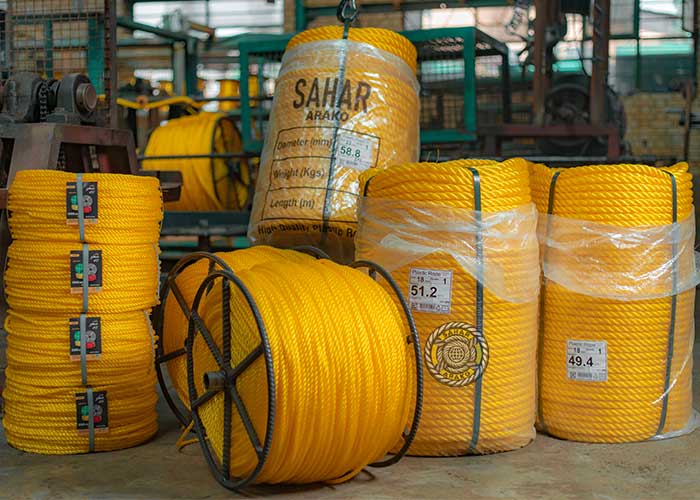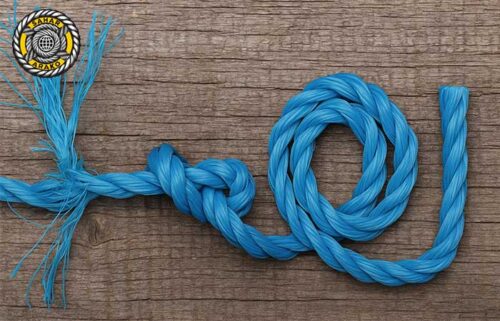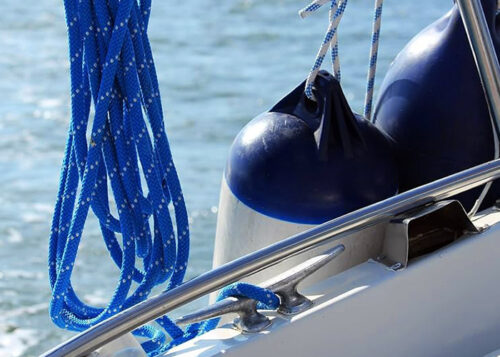Buying rope may seem like a simple task at first glance, but choosing the right type depends on several factors that must be considered before making a purchase. From the intended use to the material, size, and specific features of each type of rope, all of these play an important role in determining its quality and application. Being aware of the essential points can help you make a precise and cost-effective choice that fully meets your needs.
Key Points for Buying Rope
When purchasing rope, there are several important aspects to consider, which we will review below:
Purpose of Purchase
The first point to keep in mind when buying rope is to define the purpose and application. Depending on what you need the rope for, the type and its features will vary.
Rope Material
After defining the application, the next step is to choose the rope material. Ropes are generally divided into two main categories: natural and synthetic. Each category includes various types, and you should choose based on durability and quality.
Rope Length
Once the material is chosen, consider the required rope length. For everyday tasks, shorter lengths may suffice, but for specific applications, the right length must be carefully selected.
Rope Weight
In certain cases—especially for marine ropes—the weight of the rope becomes important. For uses such as anchoring or towing, the rope must be heavier. In bulk purchases, rope prices are usually calculated by weight.
Rope Thickness and Density
Another important factor is the rope’s thickness and density. These characteristics should be selected based on the intended application.
Price
As you know, buying rope in bulk is usually more cost-effective. In some cities, due to the presence of rope manufacturing factories, it is possible to purchase ropes at more competitive prices.
Types of Ropes and Their Uses
Cotton Rope
Cotton ropes are mainly made from natural fibers such as cotton. They are used for light packaging, household, or decorative purposes. They are flexible, biodegradable, and cost-effective, but have low resistance to moisture and decay.
Plastic (Polyethylene) Rope
Polyethylene ropes are widely used due to their resistance to moisture, lightweight, and affordable price. They are ideal for gardening, transportation, and general purposes. These ropes are usually colored and resistant to mold and fungus.
Buying Plastic Ropes
Plastic ropes are manufactured through a twisting process and are often referred to as nylon ropes. They are popular due to their reasonable cost. When purchasing, consider the following:
- Raw Material: These ropes are made from synthetic fibers, specifically polyethylene (PE) and polypropylene (PP). They come in three quality grades: first-grade, second-grade, and grade 1.5, with the main difference being in the quality and source of the raw material.
- Size and Length: Diameters range from 2 mm to 32 mm, and depending on size, the rope’s weight and strand count vary. The length usually ranges from 100 m to 500 m.
- Packaging: Typically packed in 35–40 kg bags. The number of coils per bag varies based on rope size.
- Features: Highly resistant to chemicals and environmental conditions, as well as seawater salts and moisture absorption. Nylon ropes are usually produced in a variety of colors such as white, yellow, and orange.
Nylon Rope
Nylon rope is one of the most durable options on the market. It has high elasticity and performs well under impact and pressure. It is widely used for heavy-duty, industrial, and marine applications.
Jute (Hemp) Rope
Jute rope is made from plant-based fibers and is one of the oldest rope types. It has a natural and traditional appearance and is mainly used for decorative purposes, traditional packaging, and agriculture. However, it has lower resistance compared to synthetic ropes.
Buying Jute Ropes
- Raw Material: Made from natural jute fibers. The brightness of the fibers is a key indicator of quality—lighter fibers usually mean better quality.
- Size and Length: Diameters range from 3 mm to 80 mm. Their weight depends on the number of strands used. Lengths usually vary between 70 m and 500 m.
- Packaging: Jute ropes are usually packed in 40–60 kg bundles, either as balls (coils) or skeins.
- Features: Biodegradable, with high purity jute fibers for good quality. Their natural color is light brown, though they can be dyed into other colors.
Conclusion
In the end, purchasing a suitable and high-quality rope requires careful consideration of all details and your specific needs. The best option is one that not only matches your intended application but is also durable and cost-effective. Familiarity with different rope types, raw materials, and features enables you to make the right choice tailored to your requirements.



